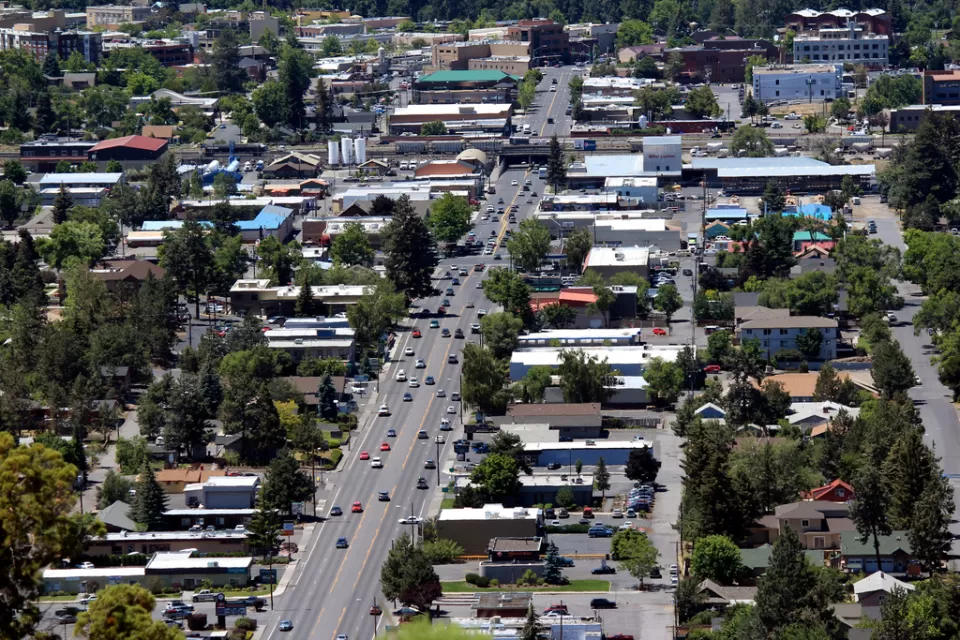Reason publishes three short "Frequently Asked Questions" documents on road-building financing tools like public-private partnerships, leasing toll roads, and high-occupancy toll (HOT) lanes.
Following are several excerpts from each of the documents:
"Question: What is a Public-Private Partnership?
Public-Private Partnerships (PPPs or P3s) are collaborations between governments and private companies that aim to improve public services and infrastructure in a manner which captures the benefits of private sector involvement (such as cost- and time-savings) while maintaining public accountability.
How common are public-private partnerships in the transportation world?
PPPs for complex, multi-billion dollar transportation projects have been used for decades in Europe, and more recently in Australia and Latin America. During the 1990s they began to be used in the United States and Canada as well. PPP toll projects are in operation in California, Texas, and Virginia, as well as several Canadian provinces. Large transportation PPPs in excess of $1 billion are in operation or under construction in Melbourne, Sydney, Paris, Israel, Santiago, and Toronto.
Are HOT Lanes just "Lexus lanes"? Do they only benefit the wealthy?
In 2005, there were over 12 million trips on Orange County's HOT Lanes. Over a decade of data is available from the 91 Express Lanes in Orange County and the HOT lanes on I-15 in San Diego. It indicates that the vast majority of drivers-high and low income-use the HOT lanes only on occasion, instead of every day. While studies of the 91 Express Lanes indicate that use increases slightly with income group, 19% of the users have an annual household income of less than $40,000, and another 23% have household incomes between $40,000 and $60,000. A 2001 telephone survey of San Diego I-15 Express Lane users revealed that 80% of the lowest income motorists ( [under] $40,000 annual household income ) in the corridor agreed that "People who drive alone should be able to use the I-15 Express Lanes for a fee." In fact, they were more likely to agree with that statement than the highest income users.
Why are states leasing their roads and turnpikes?
Long term leases-also known as monetization, privatization, toll concessions or public-private partnerships (PPPs)-help taxpayers unlock some of the inherent value in tollroads lost under government ownership. The extra value can be gained by state or local government owners through upfront concession fees or in profit-sharing arrangements written into the concession contracts. These leases are an effective way of financing, managing and operating roads while minimizing taxpayer costs and risks."
Thanks to Adrian Moore
FULL STORY: Building New Roads through Public-Private Partnerships: Frequently Asked Questions

Maui's Vacation Rental Debate Turns Ugly
Verbal attacks, misinformation campaigns and fistfights plague a high-stakes debate to convert thousands of vacation rentals into long-term housing.

Planetizen Federal Action Tracker
A weekly monitor of how Trump’s orders and actions are impacting planners and planning in America.

Chicago’s Ghost Rails
Just beneath the surface of the modern city lie the remnants of its expansive early 20th-century streetcar system.

Bend, Oregon Zoning Reforms Prioritize Small-Scale Housing
The city altered its zoning code to allow multi-family housing and eliminated parking mandates citywide.

Amtrak Cutting Jobs, Funding to High-Speed Rail
The agency plans to cut 10 percent of its workforce and has confirmed it will not fund new high-speed rail projects.

LA Denies Basic Services to Unhoused Residents
The city has repeatedly failed to respond to requests for trash pickup at encampment sites, and eliminated a program that provided mobile showers and toilets.
Urban Design for Planners 1: Software Tools
This six-course series explores essential urban design concepts using open source software and equips planners with the tools they need to participate fully in the urban design process.
Planning for Universal Design
Learn the tools for implementing Universal Design in planning regulations.
planning NEXT
Appalachian Highlands Housing Partners
Mpact (founded as Rail~Volution)
City of Camden Redevelopment Agency
City of Astoria
City of Portland
City of Laramie


























